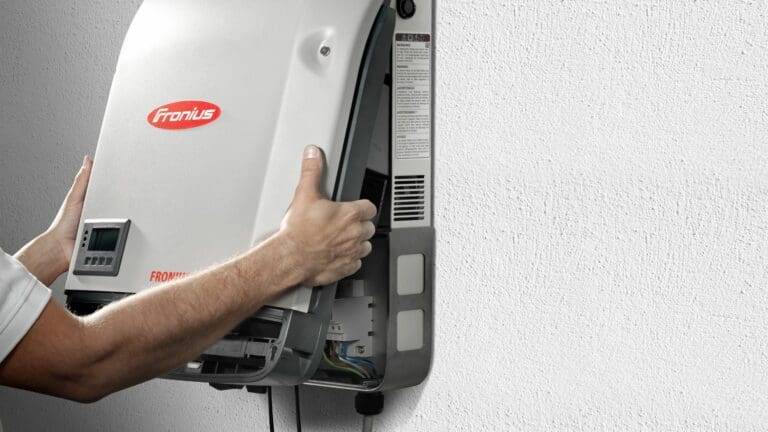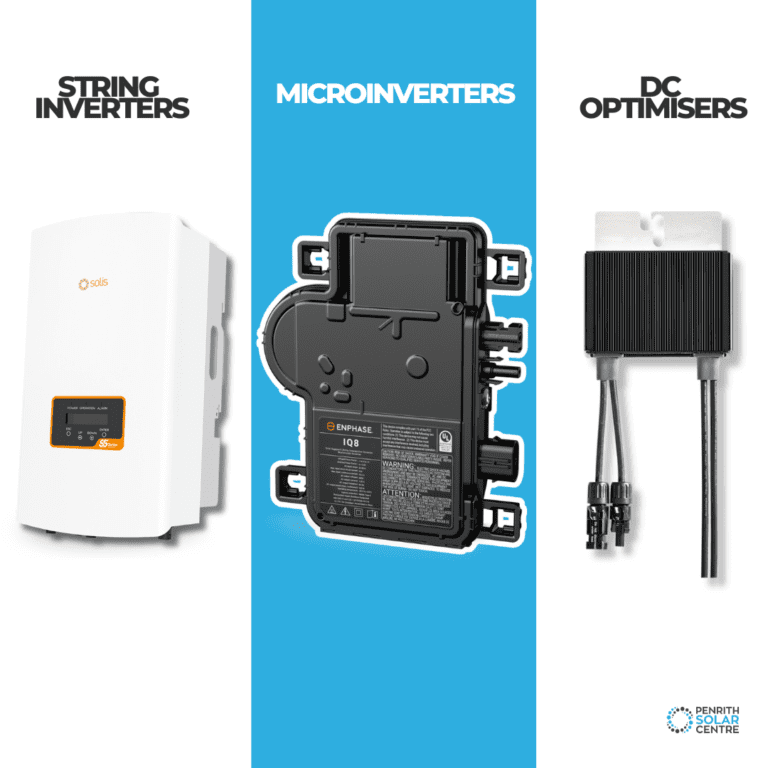Whether you’re shopping for a new solar battery or adding up how many lattes and avocado toast brunches it would take to pay off your student loans, the cost of an item matters. The most important question you’re asking when it comes to finances is this: how much does it cost?
In the case of the Tesla Powerwall 2, you can find out very quickly how much it costs on their website: $10,400 for the Powerwall and $1,700 for the Gateway. Add them up for a total of $12,100. And we haven’t even discussed installation costs.
If that’s the case, why doesn’t every solar installer in Australia sell them for the same price?
The short answer to that is this: it depends. On quite a few factors.
Why is that? Well, what type of solar system do you have or are about to install on your home, who are you choosing as an installer, and what additional equipment will you need for the battery to work? It’s a lot to consider.
The Powerwall 2 is a brilliant battery that can store energy for your home, reduce your dependence on the grid, and make your electricity bills as uneventful as a cozy night in with Netflix. It’s a great investment for your solar system, but you don’t want to spend more than you should.
In this article, you’ll learn about the factors that contribute to calculating the cost of a Tesla Powerwall 2 battery.
- Why Does the Cost of a Tesla Powerwall 2 Vary?
- How Many Batteries Are You Stacking?
- Additional Costs and Considerations While Shopping for Quotes.
By the end of this article, you’ll be a confident shopper who knows what questions to ask a solar provider and why. Regardless of who you choose to install your energy storage solution.
So grab your magnifying glass and deerstalker cap as we jump into this article that will demystify the Tesla Powerwall 2’s affordability. It just might leave you shocked… figuratively speaking of course because we don’t sell string systems. That’s a little solar industry in-joke. Onwards!
Why Does the Cost of a Tesla Powerwall Vary?
While the size of your system will affect how many batteries you’ll want to install, the primary factors that affect the cost are technology and installation.
Installation Considerations: The installation of the Tesla Powerwall 2 can be a little tricky. It’s heavy. It weighs 114 kg and it’s a two-man job to install one. However, the beauty of this battery is that it can be mounted on the wall or the floor.
At Penrith Solar Centre, our installation cost is a flat rate, and it’s included in the overall battery cost. Installing all solar system components, including the battery, simultaneously results in cost savings because it’s a one-time process. However, if you choose to add a battery at a later date, you’ll incur an additional installation fee for the extra day of labour.
While many solar companies in Australia opt for subcontractors to handle installations, we have a specially trained, in-house team of experts. Subcontractors tend to adjust their charges upwards in proportion to the solar system’s size. Some of them will install the Powerwall 2 for as low as $13,500 for parts and labour, but some charge as high as $18,000 all included.
Choosing a reputable installer for your solar system is crucial. We strongly advise conducting thorough research and posing the right questions during your selection process.
Technology Considerations: There’s an additional, compulsory piece of equipment that we mentioned in the introduction called a Tesla Gateway. The Gateway is mounted next to the main switchboard and works closely with it to monitor and meter power from the solar, power in your home and battery, and power from the grid.
As we mentioned above, the Gateway costs $1,700. This is not unusual for a quality energy storage solution like the Powerwall. A good battery, regardless of the brand or who you buy it from, will need additional components.
Especially with the Powerwall, which is our preferred choice for retrofit installations. It’s compatible with every type of solar array and the Gateway makes sure that it communicates efficiently with the panels on the roof, the home, and the grid.
Size Considerations: The cost of a solar system is determined by its size, with larger systems incurring higher expenses. There’s just more equipment to purchase. The number of panels plays a crucial role: a system with ten panels will be more affordable than one with twenty. The quantity of panels directly impacts the electricity generated, which, in turn, influences the required storage capacity.
If you want more storage than a single Powerwall, you’ll have to keep reading the next section about stacking Powerwalls.
If you’re interested in learning a bit more about what an “in-house” installer is, you might want to check out the following article titled, In-house Installers vs. Subcontractors: Which is Better?
How Many Batteries Are You Stacking?
The Tesla Powerwall 2 is a fully stackable solar battery. When you refer to a solar battery as being “stackable,” it means that you’re connecting two Powerwalls together for twice the storage capacity.
When you stack Powerwalls together, you only need one Gateway to regulate your electricity. It should be noted, however, that in Australia you can install up to ten Powerwalls for a single Gateway.
The Powerwall has an energy storage capacity of 13.5kWh. That’s the amount of energy this battery can store. Every time you stack the battery (add an additional Powerwall) you double that number. So two Powerwalls staked together is 27 kWh of energy storage.

Your energy consumption patterns are the key factor in determining how many Powerwalls you need to stack. Things that affect your energy consumption patterns will include the following:
- When you’re home: Are you at home during the day when the panels are producing electricity, or do you primarily use energy at night?
- Time of year: Is it summertime? Are you running an air conditioner? They require a lot of electricity.
- Lighting efficiency: What type of lighting do you have? Is it LED? They do require less power.
- Appliance efficiency: What about your kitchen? Is your stovetop gas or electric?
How you’re using electricity matters significantly when you’re shopping for batteries.
Another consideration, as if there aren’t enough things to consider, is determining what in your home is on when it’s “idling.”
Idling is a state of energy consumption that happens when everything in the house is on standby mode: what’s still on when you’re not using lights, air conditioning, and other electrical devices? Things like refrigerators or swimming pool pumps.

Your solar installer can help you assess your energy needs and determine how much energy storage you’ll need. Each household is unique, but if your energy usage is substantial (or likely to increase in the next fifteen years) you’ll want to look into stacking Powerwalls together.
While opting for additional batteries will increase your initial investment, it will result in long-term cost savings that align with your energy consumption needs.
If you’re interested in learning a bit more about what energy consumption patterns are and how they affect your solar purchase, you might want to check out the following article titled, What is Consumption Monitoring?
Additional Costs and Considerations While Shopping for Quotes
When evaluating battery prices for your solar system, it’s crucial to factor in the long-term savings over the lifespan of both the battery and the solar system. This calculation varies among households due to their individual, unique energy requirements.
Integrating a Powerwall into your solar system significantly enhances its overall efficiency and cost savings. While there’s a substantial upfront investment, the long-term returns are huge.
Consider this: without a battery, a solar system exclusively powers your home during daylight hours. Any surplus electricity generated goes to the grid for a feed-in tariff. If you’re not at home during the day, you’re not utilising that generated energy effectively. The savings from feed-in tariffs are decreasing as solar systems spread across Australia. In fact, nearly 30% of homes and businesses in Australia have solar systems.

The Powerwall stores excess electricity for use when the sun is not shining, enhancing the return on investment for your solar system and providing energy independence from the utility company. It offers greater cost savings compared to a solar system by itself.
When navigating the solar marketplace, pay attention to certain factors when dealing with other installers. Many solar systems are installed by Australian subcontractors. Awareness of this is particularly crucial when pricing advanced systems like the Tesla Powerwall. Opt for a battery from a company with a local presence and offices in Australia.
Why is this important? Warranties. You’ll want a company with customer service based in Australia. Consider the challenge of replacing a malfunctioning battery if it was installed by a subcontractor. While the initial cost might be lower, it comes with this associated risk.
Certain subcontractors may introduce extra fees, particularly in complex setups or retrofit projects. It’s crucial to examine the level of detail in your quote and identify any additional charges not covered in the battery and installation costs. For systems that include the Powerwall, which is AC-coupled, remember to inquire about any supplementary equipment, such as the Gateway, that may be necessary.
If you’re interested in learning a bit more about installing string solar systems, you might want to check out the following article titled, Why Do Companies Sell 6.6kW String Systems with 5kW Inverters?
Is a Tesla Powerwall 2 Worth the Cost?
Although it may seem like the cost of adding a Tesla Powerwall 2 to your existing or new solar system is fixed, there are multiple factors you should carefully consider before deciding to purchase one. We understand the complexity and confusion this choice can bring.
Our best advice is to proceed cautiously and ask a lot of questions.
- What are the installation costs? Is the installer a subcontractor or a certified installer?
- What additional components are required to get your Powerwall up and running?
- How big is your solar system? Do you need more than one Powerwall?
- Don’t forget to look at your energy consumption patterns when evaluating your needs.
Maximising the value of your investment and understanding the long-term return on investment are critical aspects that significantly affect the initial cost.
At Penrith Solar Centre, every solar system begins with a conversation. We assess your needs and goals for electricity in your home, and then we work with you to figure out the best way to install your system and everything that it will need. Some folks will need a solar battery like the Powerwall. Your power is in your hands. We’re just here to help you on your solar journey.

If you’re interested in learning a bit more about the lifespan of a Powerwall (which is an additional consideration when calculating its cost), you might want to check out the following article titled, What is the Lifespan of the Tesla Powerwall 2?










